The electric vehicle market is heating up, and as two of the most compelling contenders in the segment, the VW ID.5 and Tesla Model 3 offer distinct approaches to electrification. As the automotive landscape shifts towards sustainable mobility, this comparison explores their technical prowess, innovations, and overall driving experience.
VW ID.5 vs Tesla Model 3 – Which model is better for everyday use?
Everyday use, family trips or long-distance drives – here’s where the differences show.
Discover whether VW ID.5 or Tesla Model 3 fits your lifestyle better.
Design and Body Type
The VW ID.5 is categorized as an SUV, boasting a robust stance with a length of 4,599 mm, width of 1,852 mm, and height of 1,618 mm. Its spacious cabin is built for comfort, accommodating up to five passengers, and offers a trunk capacity of 549 liters.
In contrast, the Tesla Model 3 is a stylish hatchback with a more aerodynamic profile, measuring 4,720 mm in length and 1,850 mm in width, with a height of 1,441 mm. It also seats five and provides a slightly larger trunk space of 594 liters, making it practical for everyday use.
Performance and Powertrain
Under the hood, both vehicles are equipped with electric powertrains, but the specs diverge significantly. The VW ID.5 offers two engine options with power outputs ranging from 170 HP to a robust 340 HP in the all-wheel-drive variant. It accelerates from 0 to 100 km/h in as little as 5.4 seconds for the high-performance model.
On the other hand, the Tesla Model 3 brings even more muscle to the table, producing up to 460 HP in its Performance variant, achieving an exhilarating 0-100 km/h time of just 3.1 seconds. With its rear-wheel drive and all-wheel drive configurations, the Model 3 promises a thrilling drive that emphasizes both speed and handling.
Range and Efficiency
When considering electric range, the VW ID.5 reflects commendable figures. Its range varies from 365 km to an impressive 563 km, depending on the configuration, supported by battery capacities of 52 kWh to 77 kWh. The consumption rates are competitive, ranging between 15.6 and 16.6 kWh/100 km.
Conversely, the Tesla Model 3 excels in efficiency, with a maximum electric range of 702 km. Its battery options of 62 kWh and 79 kWh result in consumption rates between 12.5 and 16.5 kWh/100 km, enhancing its appeal for long-distance travel. This efficiency, coupled with rapid charging capabilities, positions the Model 3 as a leader in its class.
Technology and Innovations
Both vehicles incorporate advanced technologies and innovative features. The VW ID.5 is equipped with the latest infotainment system, boasting a responsive touchscreen interface and intuitive voice controls, making it user-friendly. Additionally, it includes a suite of driver assistance features that enhance safety and convenience.
The Tesla Model 3, however, takes technology to another level with its Autopilot capabilities and over-the-air software updates, ensuring that owners benefit from the latest features and enhancements. The minimalist interior, dominated by a large central touchscreen, merges functionality with modern aesthetics, shifting the paradigm for driver-centric design.
Conclusion
In summary, both the VW ID.5 and Tesla Model 3 present compelling arguments for those considering electric vehicles. While the VW ID.5 offers a spacious and family-oriented SUV experience with solid performance and practical features, the Tesla Model 3 shines with its superior range, performance, and cutting-edge technology.
Ultimately, the choice between the two will depend on individual preferences—whether one favors the SUV versatility of the ID.5 or the sporty, tech-forward allure of the Model 3. As the electric car market continues to evolve, both models stand as testaments to the innovation within the automotive industry.
Here’s where it gets real: The technical differences in detail
Costs and Efficiency:
Looking at overall running costs, both models reveal some interesting differences in everyday economy.
Tesla Model 3 has a barely noticeable advantage in terms of price – it starts at 34300 £, while the VW ID.5 costs 36800 £. That’s a price difference of around 2554 £.
In terms of energy consumption, the advantage goes to the Tesla Model 3: with 13.20 kWh per 100 km, it’s a bit more efficient than the VW ID.5 with 15.70 kWh. That’s a difference of about 2.50 kWh.
As for range, the Tesla Model 3 performs clearly perceptible better – achieving up to 750 km, about 191 km more than the VW ID.5.
Engine and Performance:
Under the bonnet, it becomes clear which model is tuned for sportiness and which one takes the lead when you hit the accelerator.
When it comes to engine power, the Tesla Model 3 has a distinct edge – offering 460 HP compared to 340 HP. That’s roughly 120 HP more horsepower.
In acceleration from 0 to 100 km/h, the Tesla Model 3 is decisively quicker – completing the sprint in 3.10 s, while the VW ID.5 takes 5.40 s. That’s about 2.30 s faster.
In terms of top speed, the Tesla Model 3 performs distinct better – reaching 262 km/h, while the VW ID.5 tops out at 180 km/h. The difference is around 82 km/h.
There’s also a difference in torque: VW ID.5 pulls hardly perceptible stronger with 679 Nm compared to 660 Nm. That’s about 19 Nm difference.
Space and Everyday Use:
Whether family car or daily driver – which one offers more room, flexibility and comfort?
Both vehicles offer seating for 5 people.
In curb weight, Tesla Model 3 is barely noticeable lighter – 1822 kg compared to 1963 kg. The difference is around 141 kg.
In terms of boot space, the Tesla Model 3 offers barely noticeable more room – 594 L compared to 549 L. That’s a difference of about 45 L.
When it comes to payload, VW ID.5 evident takes the win – 549 kg compared to 333 kg. That’s a difference of about 216 kg.
Who wins the race?
The Tesla Model 3 proves to be is largely superior and therefore becomes our DriveDuel Champion!
Tesla Model 3 is the better all-rounder in this comparison.
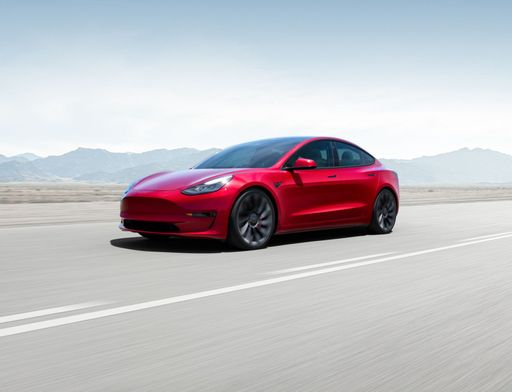 @ Tesla, Inc.
@ Tesla, Inc.
Tesla Model 3
VW ID.5
VW ID.5 dresses electric power in a sleek, coupe-like profile that turns sensible motoring into something a touch more stylish and smug. Inside it’s spacious and user-friendly, with calm, confidence-inspiring driving that suits buyers who want EV simplicity without the sci‑fi theatrics.
details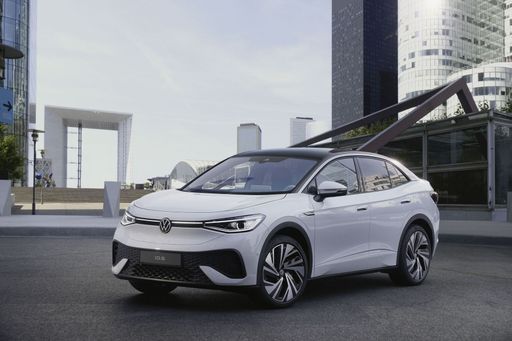 @ Volkswagen AG / VW Media
@ Volkswagen AG / VW Media
 @ Volkswagen AG / VW Media
@ Volkswagen AG / VW Media
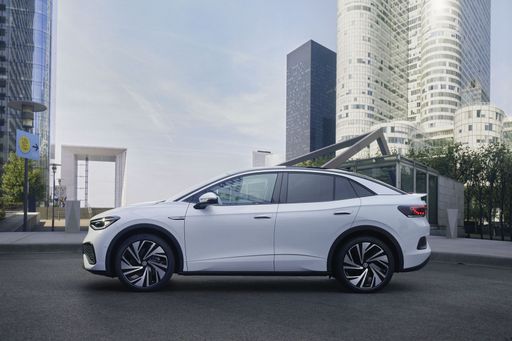 @ Volkswagen AG / VW Media
@ Volkswagen AG / VW Media
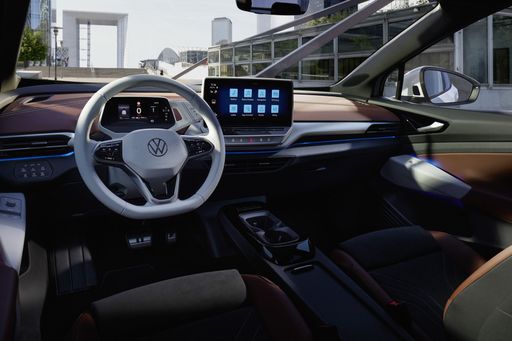 @ Volkswagen AG / VW Media
@ Volkswagen AG / VW Media
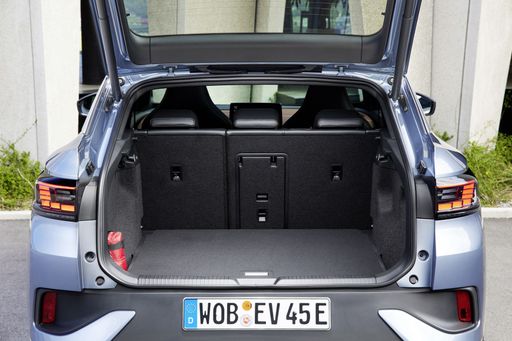 @ Volkswagen AG / VW Media
@ Volkswagen AG / VW Media
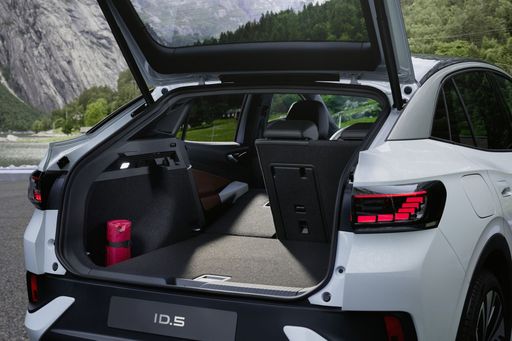 @ Volkswagen AG / VW Media
@ Volkswagen AG / VW Media
Tesla Model 3
The Tesla Model 3 slices through daily commuting with a silent, confident shove that makes petrolheads reassess their life choices, while its minimalist cabin feels more like a slick gadget gallery than a traditional car interior. For buyers after a fuss-free, tech-forward electric with plenty of grin factor and low running drama, it’s hard to beat—just don't be surprised when the car updates itself overnight.
details @ Tesla, Inc.
@ Tesla, Inc.
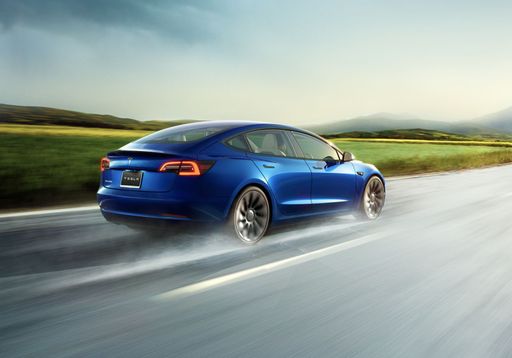 @ Tesla, Inc.
@ Tesla, Inc.
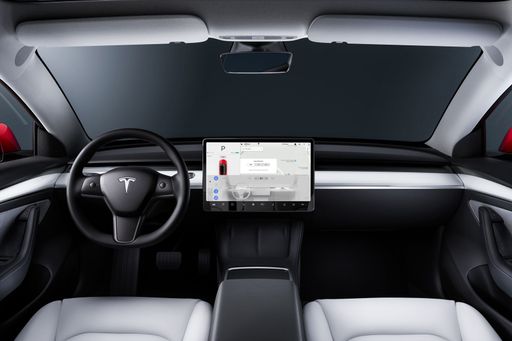 @ Tesla, Inc.
@ Tesla, Inc.
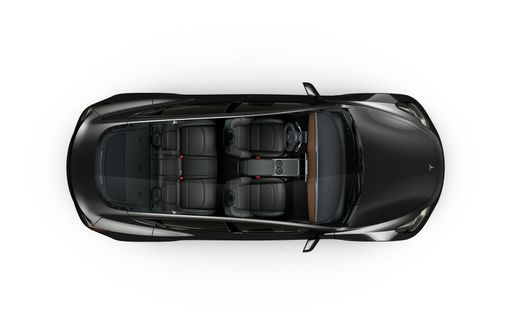 @ Tesla, Inc.
@ Tesla, Inc.
 @ Volkswagen AG / VW Media
@ Volkswagen AG / VW Media
|
 @ Tesla, Inc.
@ Tesla, Inc.
|
|
|
|
Costs and Consumption |
|
|---|---|
|
Price
36800 - 48400 £
|
Price
34300 - 50100 £
|
|
Consumption L/100km
-
|
Consumption L/100km
-
|
|
Consumption kWh/100km
15.7 - 16.6 kWh
|
Consumption kWh/100km
13.2 - 16.7 kWh
|
|
Electric Range
363 - 559 km
|
Electric Range
550 - 750 km
|
|
Battery Capacity
52 - 79 kWh
|
Battery Capacity
64.5 - 83 kWh
|
|
co2
0 g/km
|
co2
0 g/km
|
|
Fuel tank capacity
-
|
Fuel tank capacity
-
|
Dimensions and Body |
|
|---|---|
|
Body Type
SUV
|
Body Type
Sedan
|
|
Seats
5
|
Seats
5
|
|
Doors
5
|
Doors
4
|
|
Curb weight
1963 - 2233 kg
|
Curb weight
1822 - 1929 kg
|
|
Trunk capacity
549 L
|
Trunk capacity
594 L
|
|
Length
4582 - 4599 mm
|
Length
4720 - 4724 mm
|
|
Width
1852 mm
|
Width
1850 mm
|
|
Height
1601 - 1618 mm
|
Height
1431 - 1440 mm
|
|
Max trunk capacity
1561 L
|
Max trunk capacity
-
|
|
Payload
517 - 549 kg
|
Payload
303 - 333 kg
|
Engine and Performance |
|
|---|---|
|
Engine Type
Electric
|
Engine Type
Electric
|
|
Transmission
Automatic
|
Transmission
Automatic
|
|
Transmission Detail
Reduction Gearbox
|
Transmission Detail
Reduction Gearbox
|
|
Drive Type
Rear-Wheel Drive, All-Wheel Drive
|
Drive Type
Rear-Wheel Drive, All-Wheel Drive
|
|
Power HP
170 - 340 HP
|
Power HP
283 - 460 HP
|
|
Acceleration 0-100km/h
5.4 - 8.9 s
|
Acceleration 0-100km/h
3.1 - 6.1 s
|
|
Max Speed
160 - 180 km/h
|
Max Speed
201 - 262 km/h
|
|
Torque
310 - 679 Nm
|
Torque
420 - 660 Nm
|
|
Number of Cylinders
-
|
Number of Cylinders
-
|
|
Power kW
125 - 250 kW
|
Power kW
208 - 338 kW
|
|
Engine capacity
-
|
Engine capacity
-
|
General |
|
|---|---|
|
Model Year
2024 - 2025
|
Model Year
2025
|
|
CO2 Efficiency Class
A
|
CO2 Efficiency Class
A
|
|
Brand
VW
|
Brand
Tesla
|
What drive types are available for the VW ID.5?
The VW ID.5 is available as Rear-Wheel Drive or All-Wheel Drive.
The prices and data displayed are estimates based on German list prices and may vary by country. This information is not legally binding.
